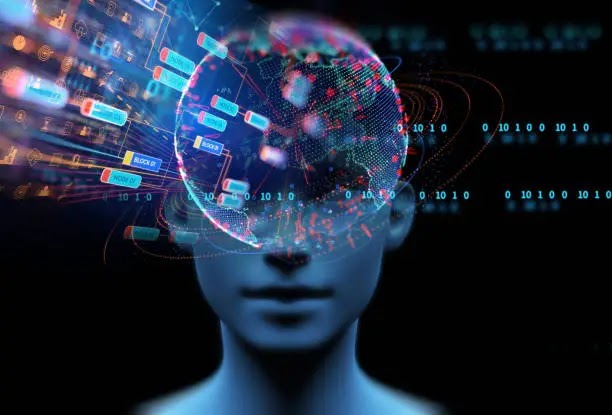Human creativity is a major challenge
The quest to replicate true human creativity with artificial intelligence (AI) is a monumental challenge that has intrigued researchers, innovators, and futurists for decades. The human mind's capacity for creativity, innovation, and originality is often seen as one of our defining characteristics. In this article, we will delve into the intriguing world of AI and creativity, addressing the following key topics:
- Can AI Be Creative?
- The Future of AI Creativity
- AI and Human Creativity: A Partnership
Can AI Be Creative?
The notion of AI being creative raises fundamental questions about the nature of creativity itself. Can machines genuinely create, or are they merely replicating patterns and information based on pre-existing data? The answer lies in the complex interplay between AI algorithms, data, and human ingenuity.
Understanding AI Creativity
AI systems rely on large datasets and complex algorithms to generate creative content. Machine learning models, such as neural networks, can be trained to mimic creative processes. For instance, deep learning models can analyze extensive art collections to generate original paintings that reflect artistic styles.
The Role of Data in AI Creativity
To be creative, AI systems depend on high-quality, diverse, and extensive datasets. The richness of the data fuels the AI's ability to make connections and generate innovative content. In this context, data is the paint, and AI algorithms are the brushes, helping create masterpieces in various domains.
Challenges in AI Creativity
Replicating true human creativity with AI faces significant challenges. One primary hurdle is the AI's dependence on existing data. While it can synthesize new content from existing patterns, it often struggles to think beyond the data it was trained on. Human creativity often involves the ability to think outside the box and generate entirely new ideas.
The Future of AI Creativity
The future of AI creativity holds great promise and intrigue. As technology continues to advance, several exciting trends and developments are shaping the landscape of AI-powered creativity.
Hybrid Creations
A fascinating development is the emergence of hybrid creations that combine human and AI efforts. Many creative professionals are now collaborating with AI systems to enhance their creative output. For instance, musicians are using AI to compose music, and authors are employing AI to generate plot ideas or even co-write novels.
AI-Enhanced Art
In the world of visual arts, AI is transforming the creative process. Artists and designers are using AI tools to create intricate and unique designs, sculptures, and digital artwork. AI can assist in generating new visual concepts or adding a fresh perspective to existing ideas.
Evolving Industries
Numerous industries are witnessing the integration of AI-driven creativity. From advertising and marketing to entertainment and fashion, AI is becoming an integral part of the creative process. It helps streamline tasks, generate new ideas, and optimize creative campaigns for maximum impact.
Ethical Considerations
The future of AI creativity also raises ethical concerns. As AI systems become more proficient at mimicking human creativity, the question of originality and intellectual property becomes paramount. How should society address issues of ownership, attribution, and the value of human creativity in a world increasingly driven by AI?
AI and Human Creativity: A Partnership
Rather than viewing AI as a replacement for human creativity, it is more beneficial to see it as a partner in the creative process. The synergy between human ingenuity and AI capabilities can lead to remarkable outcomes.
Creative Augmentation
AI can serve as a tool for creative professionals, enhancing their abilities and productivity. Graphic designers can use AI-powered software to create intricate designs, and architects can simulate and optimize building designs for efficiency and aesthetics. AI streamlines tasks, enabling humans to focus on higher-level creative thinking.
Inspiration and Idea Generation
AI can be an endless source of inspiration. It can analyze vast amounts of data, identify trends, and suggest ideas that may have eluded human creatives. Authors, for instance, can use AI to analyze literature and generate fresh plot concepts. Similarly, AI can assist marketers in identifying emerging trends and consumer preferences.
Expanding Creative Boundaries
AI has the potential to expand creative boundaries by enabling humans to explore novel ideas and experiment without the fear of failure. With AI handling the execution of repetitive and time-consuming tasks, creatives can devote more time to innovative thinking and experimentation.
At the End
The challenge of replicating true human creativity with AI is indeed a major one. While AI may never fully replace the depth and breadth of human creativity, it offers exciting opportunities to augment, enhance, and collaborate with human creativity. The future of AI-powered creativity is filled with promise, innovation, and a host of ethical questions that will continue to shape the creative landscape for years to come. In this evolving relationship between AI and human creativity, the only limit appears to be the boundless potential of the human imagination.







